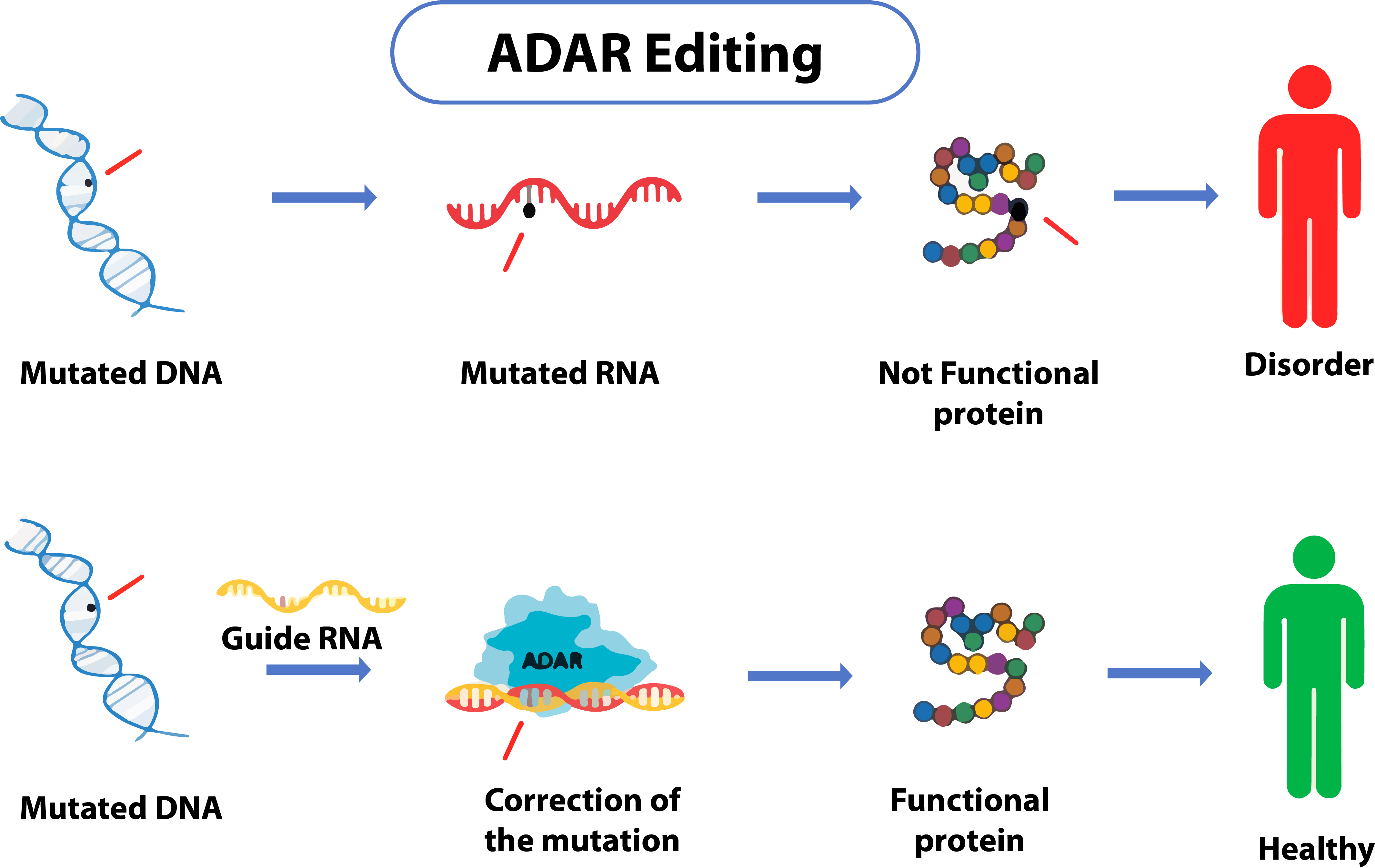Wave Life Sciences (US based biotechnology company) has successfully performed RNA editing to treat alpha-1 antitrypsin deficiency (AATD, an inherited disorder).
- In AATD, levels of protein α-1 antitrypsin build up and affect liver and lungs.
About RNA (Ribonucleic acid) Editing
- It is a process that modifies genetic information on RNA sequences through insertion, deletion or substitution.
- Scientists used technique called ‘Adenosine Deaminase Acting on RNA (ADAR)’ with guide RNA (gRNA). (refer image)
- gRNA are small RNA molecules that direct editing machinery by base-pairing with mRNA in specific regions for modification.
- Process
- RNA has four building blocks: A (Adenine), G (Guanine), U (Uracil), and C (Cytosine).
- ADAR converts adenosine in mRNA to inosine, which mimics function of guanosine. (adenosine and guanosine are nucleosides combining A and G with ribose respectively).
- Cell detects Inosine in Adenosine's position, triggering cellular response to correct the mismatch.
- The process thus restores mRNA’s original function, and cell starts making normal proteins.
Challenges in RNA Editing
- Lack of Specificity: ADARs can perform targeted and non-targeted changes in mRNA due to lower accuracy of gRNA which could lead to side effects.
- Transient nature and nascent stage of development: To sustain therapy effects, repeated treatment will be necessary.
 Comparison between RNA and DNA editing
|





